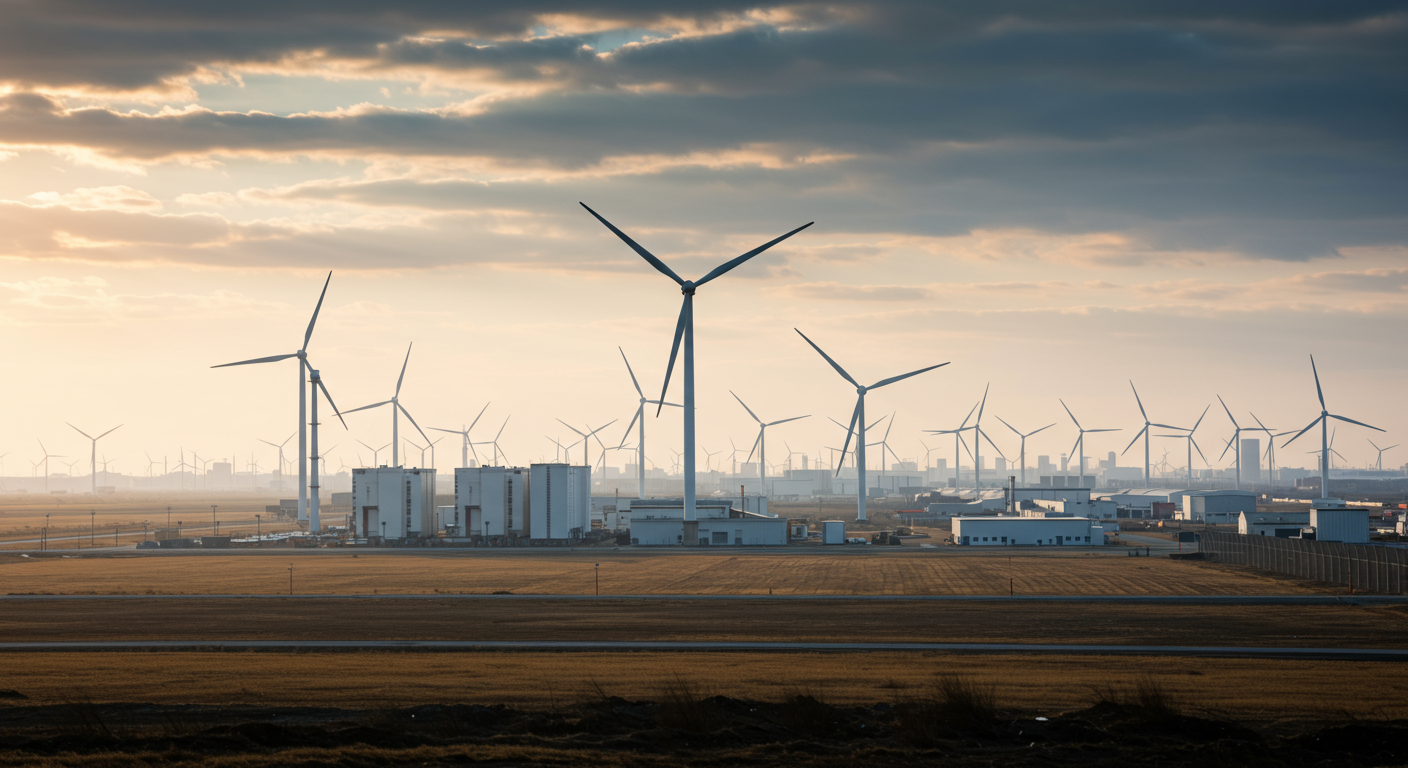Have you ever paused to think about where the electricity powering your home, your phone, or your office truly comes from? For a long time, much of our energy came from burning fossil fuels like coal, oil, and natural gas. While these sources have fueled progress, they also contribute to pollution and climate change. But what if there was a way to power our lives more cleanly, sustainably, and efficiently?
Well, there’s some truly exciting news that’s making headlines, and it’s something every Indian can be incredibly proud of. India has just achieved a monumental milestone in its clean energy journey, hitting a key target not just on time, but years ahead of schedule! This isn’t just a technical achievement; it’s a giant leap towards a healthier planet and a more secure energy future for all of us.
India’s Green Triumph: Hitting 50% Clean Power Years Early!
Imagine setting a major goal for 2030, only to find out you’ve already accomplished it in 2022! That’s exactly what India has done in the realm of clean energy. The Ministry of Power proudly announced that India is now sourcing 50% of its total electricity generation capacity from non-fossil fuel sources. This fantastic achievement was highlighted during the COP26 climate summit, showcasing India’s strong commitment on a global stage.
For context, the original target was to reach this 50% mark by the year 2030. To hit it five years early is not just commendable, it’s a testament to the incredible efforts and rapid strides being made in the country’s energy sector. This isn’t a small feat; it means that half of our installed capacity for generating electricity now comes from sources that don’t rely on burning fossil fuels, significantly reducing our carbon footprint.
What Exactly Are ‘Clean Sources’ of Power?
When we talk about ‘clean’ or ‘non-fossil fuel’ sources, what exactly do we mean? Essentially, these are energy sources that don’t produce greenhouse gases or significant pollution when generating electricity. The biggest contributors to this half-way mark are:
Solar Power: Think of the vast solar farms harnessing the sun’s abundant energy. India has been investing heavily in solar, and the results are clearly shining through. From rooftop panels to massive ground-mounted installations, solar energy is playing a pivotal role.
Wind Power: Wind turbines gracefully spinning in many parts of the country are another major clean energy player. India’s long coastline and open plains provide excellent opportunities for wind energy generation, converting the force of wind into electricity.
Hydroelectric Power: This comes from the force of flowing water, typically through dams. It’s a well-established clean energy source, though its environmental impact can vary depending on the specific project. Nevertheless, it contributes significantly to the non-fossil fuel capacity.
Biomass Power: This involves generating electricity from organic matter, like agricultural waste or plant materials. It’s a way to convert waste into energy, offering a sustainable solution.
Nuclear Power: While often debated, nuclear energy is considered a non-fossil fuel source because it doesn’t emit greenhouse gases during operation. India has a growing nuclear energy program, which also contributes to its clean energy portfolio. By October 2022, the total installed electricity capacity from these non-fossil sources had reached an impressive 167.6 Gigawatts (GW).
Why This Achievement Matters to You and Me
This isn’t just about impressive numbers or government targets; this achievement has real-world implications for every single person in India and for the global community. Here’s why it’s so important:
Cleaner Air and a Healthier Environment: Less reliance on fossil fuels means fewer harmful emissions released into our atmosphere. This translates to cleaner air for us to breathe, reduced instances of respiratory diseases, and a healthier environment for our children to grow up in. It directly combats climate change by reducing greenhouse gas emissions that cause global warming.
Energy Security and Independence: When we depend less on imported fossil fuels, we become more self-reliant for our energy needs. This protects us from volatile global fuel prices and geopolitical instabilities, ensuring a more stable and predictable energy supply for our homes and industries.
Economic Growth and Job Creation: The rapid expansion of the renewable energy sector has led to the creation of numerous jobs, from manufacturing solar panels and wind turbines to installation, maintenance, and research. This fosters economic growth and provides new opportunities for a skilled workforce.
Global Leadership and Responsibility: By achieving this target ahead of time, India demonstrates its commitment to tackling climate change on a global scale. It sets an example for other developing nations and strengthens India’s position as a responsible global player in the fight against climate change.
The Road Ahead: Building on This Momentum
While reaching 50% clean energy capacity is a huge success, it’s also a stepping stone. India isn’t stopping here. The country has even more ambitious goals for the future, notably the target of achieving 500 GW of non-fossil fuel electricity capacity by 2030. This is a massive leap from the current 167.6 GW and will require sustained effort and innovation.
Of course, this journey isn’t without its challenges. Integrating such a large amount of intermittent renewable energy (like solar and wind, which only generate power when the sun shines or the wind blows) into the national grid requires advanced technology and smart grid solutions. Developing sufficient energy storage solutions, like large-scale batteries, is crucial to ensure a continuous and reliable power supply.
Furthermore, securing financing for these large-scale projects, efficient land acquisition, and developing skilled human resources will be ongoing priorities. The government’s continued policy support, incentives for renewable energy projects, and focus on research and development will be key to overcoming these hurdles.
A Brighter, Greener Future for India
India’s achievement of getting 50% of its power from clean sources years ahead of target is more than just a statistic; it’s a powerful message of progress, resilience, and commitment. It shows that with clear vision and dedicated effort, even the most ambitious environmental goals are within reach.
This success story is a source of immense pride and optimism. It means we are actively building a future where our energy needs are met responsibly, where our air is cleaner, and where our planet is healthier for generations to come. It’s a journey we’re all a part of, and one that promises a truly brighter, greener tomorrow for India and the world.









